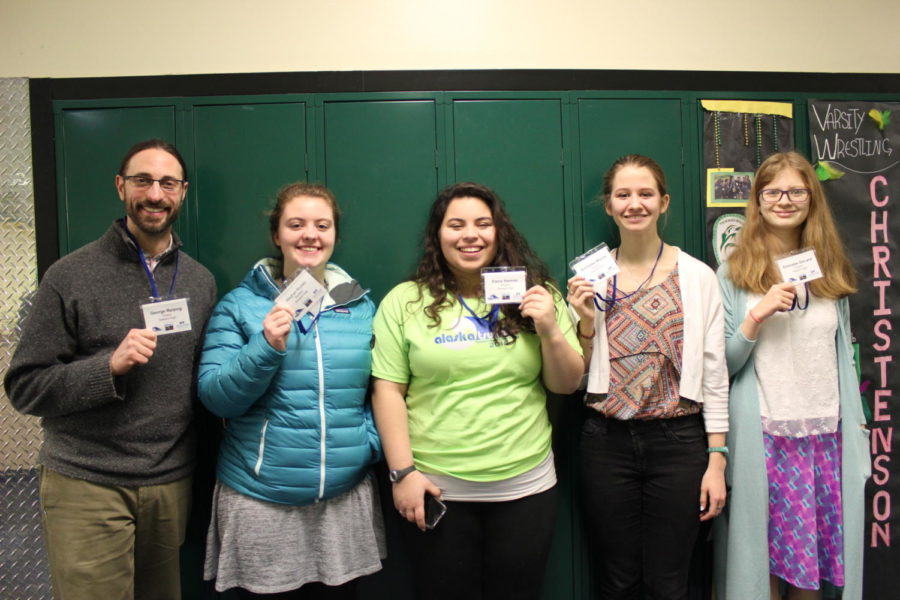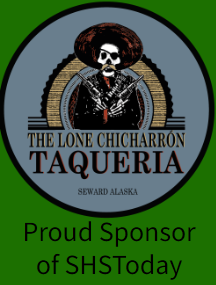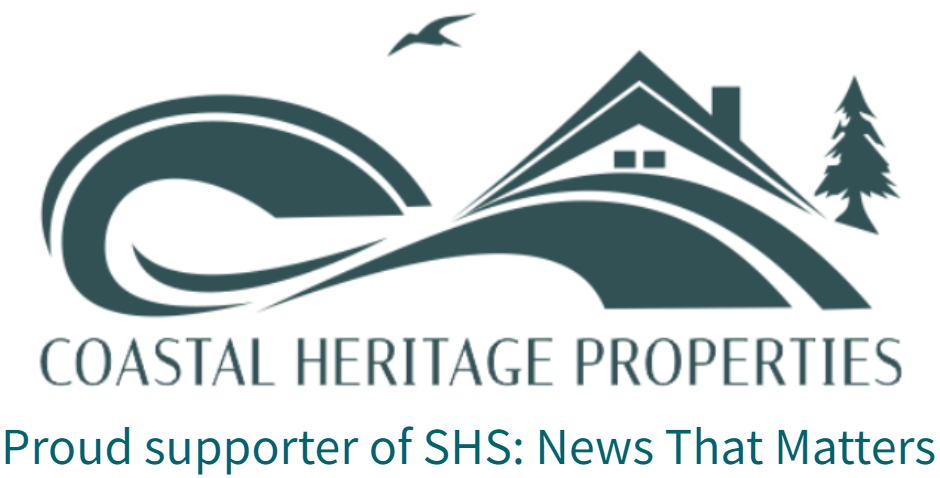Lessons from the Tsunami Bowl
February 23, 2018
“What even is NOSB?” is the number one asked question I receive during the winter months. NOSB stands for National Ocean Sciences Bowl, a three day long competition revolving around the subject of the ocean. The competition itself has three parts: the paper, a fifteen page research paper based on the topic provided; the presentation, a powerpoint or prezi illustrating and further explaining the information in the paper; and the quizbowl rounds, events similar to jeopardy.
Generally, each team is comprised of four members, dividing the workload into specific sections. Once the topic is announced, teams have about two months to research and formulate their scientific papers. For instance, this year the topic was “how does the ocean regulate extreme weather events?” After all the papers are submitted in December, the creation of the presentation begins. While building these, teams simultaneously study and practice all subjects of ocean sciences for the quiz bowl rounds: chemistry, marine biology, ocean geography, marine policy, etc.
Day one of the 2018 competition, kids representing schools all over Alaska filed into the American Legion for an early morning breakfast of pancakes, eggs, and bacon, as they would for the next two days. Starting at 8:30 a.m, each team presented a 20 minute presentation on their chosen topic. This year, with a new coordinator, things were done a little differently. For example, there was more than one field trip available for the many teams, including a Major Marine tour, a squid dissection, a tour of the shellfish hatchery, and the general favorite, the R.O.V (remotely operated vehicle) challenge. As there were more teams than past years, the field trips alternated throughout the day. The day ended with a dinner hosted at the Alaska SeaLife Center, catered by Hamajang.
Day two, Saturday February 10, began with a first ever Science Cafe. Though most everyone was much too tired, we all appreciated the volunteers for coming in and talking to us. Saturday begun the quiz bowl rounds. Teams were entered into a bracket set-up, and moved from room to room. Quiz bowl is the most enjoyable part of the weekend. Teams have 6 minutes for toss-up questions, two 3-4 minute segments of team questions, 5 minutes to go over answers, a 2 minute break, and another 6 minute round of toss-up, resulting in about forty-five minute rounds.
Sunday held the elimination rounds between the top competing teams, determining the final placement. Concluding in the mid-afternoon, the top two teams, Cordova’s Yeti Crabs and South Anchorage High’s Roxskis and Rogue Waves, gathered in the auditorium in front of the entire NOSB crowd. Never since I had been in NOSB, had Mat-Su Technical School not made it to finals, so the room was buzzing. Steadily moving through toss-ups and team questions, the score volleyed between the teams. It was David versus Goliath. The round ended with a score of 80 to 50, and Cordova’s victory — a triumph everyone cheered for.
The National Ocean Sciences Bowl has played a monumental role in my life. I first learned about the competition through my brother, who joined his freshman year. Their coach, Shoshannah Brasher, was the new science teacher at Seward High School, who took over the NOSB team. During my seventh and eighth grade years, EmmaLee Moore and I were part of the first group of kids to be in the Ocean Sciences Club at the SeaLife Center. Loving what we learned and how we learned it, Emma and I joined the high school NOSB team together. I think what I like best about it (though it can be quite the pain) is how small the team is. It’s an intimate group, and you spend a lot of time together, learning about a mutual interest. Over the years, it became routine to be part of the team, not only enjoying the other members, but the coach, Mrs. Brasher, as well. Freshman year, at the end of the NOSB season, I promised Emma that I would participate every year until we graduated. And as senior year rolled around, the promise was flashing neon in my brain, so bright in fact, that I passed up graduating early to see the season through. The 2018 team was coached by George Reising and consisted of myself, EmmaLee Moore, Emmalee Deland, Meghan Mullaly, and Sohan Dissanayake.
I know that marine sciences aren’t for everyone, but I strongly encourage those who enjoy it to be part of NOSB. It not only broadens your knowledge of ocean sciences, but improves writing skills and technique, teaches perseverance, and encourages confidence in both one’s self and public speaking. There are many little things that this little team can teach you, if you allow yourself to learn them.





